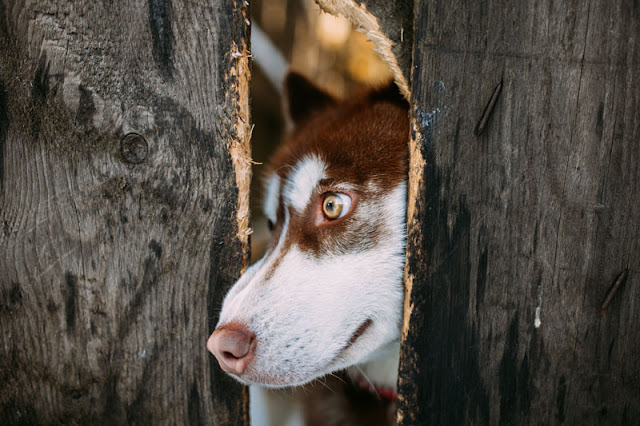What Do Young Children Learn From Pets?
Is a better understanding of biology
something children can learn from dogs and cats?
So, if a young child’s experiences of spending time with a pet are of being sociable with it, would you expect them to learn much about biology from this? It’s not like they are dealing with the biological end of things – feeding, grooming, cleaning, making sure the animal has peed and pooped. And yet they did show a better understanding of biological concepts.
A control group of adults did the same study, but they skipped drawing a picture of andro. Adults were equally likely to relate properties from humans to dogs as vice versa (i.e. if a dog has andro, so does a human).
Muldoon, J., Williams, J., & Lawrence, A. (2014). 'Mum cleaned it and I just played with it': Children's perceptions of their roles and responsibilities in the care of family pets Childhood
Geerdts, M., Van de Walle, G., & LoBue, V. (2015). Daily animal exposure and children’s biological concepts Journal of Experimental Child Psychology, 130, 132-146
As an Amazon Associate I earn from qualifying purchases.
 |
| Photo: elista/Shutterstock |
By Zazie Todd, PhD
This page contains affiliate links which means I may earn a commission on qualifying purchases at no cost to you.
This page contains affiliate links which means I may earn a commission on qualifying purchases at no cost to you.
Young children are very interested in
animals. One study even found children aged 11 – 40 months would prefer to look
at an animal behind a glass screen (even if the animal is fast asleep) rather than play with a toy (LoBue et al 2013). Now researchers are asking
whether this interest in animals means that children with a cat or dog know more about
biology than those without.
The study, by Megan Geerdts (University of
North Carolina at Greensboro) et al, was in two parts. First of all, the
scientists needed to know how preschool children actually interact with cats
and dogs. Although this is observed by parents every day, it seems it hasn’t been
recorded in enough detail for science. So the researchers observed 24 preschool children in a
free-play session with their pet, and asked their parents to complete a questionnaire
about their child’s daily experiences with the animal. Then, in the second
part, they tested 3 – 5 year old children with and without a pet on their
knowledge of biological concepts.
First of all, the children’s interactions
with pets were mostly social. They were not really involved in taking care of
the animals, which is not surprising given their age. A study of older children
(age 7 – 13 years old) by Muldoon et al found
they also mostly had social interactions with their pets, and left the
care-taking to their parents.
Children typically interacted in reciprocal
ways that would elicit a response from the animal, such as holding out a hand
to be sniffed, trying to engage in play or giving the pet a command. The questionnaires
completed by parents confirmed that interactions were social, and children were
not involved in care-taking behaviour. They interacted with cats and dogs in the
same way, but girls interacted more than boys.
 |
| Photo: Patricia Marks/Shutterstock |
So, if a young child’s experiences of spending time with a pet are of being sociable with it, would you expect them to learn much about biology from this? It’s not like they are dealing with the biological end of things – feeding, grooming, cleaning, making sure the animal has peed and pooped. And yet they did show a better understanding of biological concepts.
The way this was tested is pretty neat. If
you were to ask something like “People have a heart. Does your cat have a
heart?” you couldn’t rule out the possibility that some children might have
learned about hearts at their pre-school or playgroup and have existing prior
knowledge. So the researchers used a made-up word that none of the children
would have come across before.
96 children aged 2 - 6 took part in the
second study. One group were told, “People have andro inside them. Andro
is round and green and looks like this!” The child and experimenter drew a
picture of andro together. Then, the
child was asked whether various animals, plants and inanimate objects also had andro inside. Another group did the same
thing, but instead of being told that people have andro, they were told that dogs have andro.
Then the children were asked questions
about their own cat or dog (if they had one) and the experimenter’s cat or dog
(if they didn’t). The questions were about whether or not the cat or dog had
various psychological and physical properties, including emotions, sleep, food,
and parents.
A control group of adults did the same study, but they skipped drawing a picture of andro. Adults were equally likely to relate properties from humans to dogs as vice versa (i.e. if a dog has andro, so does a human).
Half of the children had a cat or dog, and just
like in the first study, their parents said their interactions were mostly
social. Amongst 3 year old and 5 year olds without pets, they were more likely
to relate properties from humans to dogs, rather than vice versa. If 5 year
olds had pets, they were more likely to relate properties from dogs to humans
than their peers without pets.
Five year olds and adults were more likely
to say properties applied to other living things rather than to plants and
inanimate objects. Three year olds tended to apply things equally to plants and
inanimate objects. Having a pet made no difference to these results.
But in both age groups, if a child had a
pet, they were more likely to say animals had biological properties compared to
children that don’t have a pet. This effect was not found for psychological
properties.
This study shows that children who have
social experience with pets are less likely to be anthropocentric in their
reasoning. The scientists say, “our findings help to support the hypothesis
that treating animals as social creatures may help children to analogically
understand animals as more similar to humans in other ways, including
biologically.”
If you liked this post, check out my book Wag: The Science of Making Your Dog Happy . Modern Dog calls it “The must-have guide to improving your dog’s life.”
. Modern Dog calls it “The must-have guide to improving your dog’s life.”
If you're a cat person, you might like to check out my book Purr: The Science of Making Your Cat Happy. Dr. Sarah Ellis says, "Purr is definitely a book your cat would want you to read!"
What do you think children learn from their pets?
As an Amazon Associate I earn from qualifying purchases.
Reference
LoBue, V., Bloom Pickard, M., Sherman, K., Axford, C., & DeLoache, J. (2013). Young children's interest in live animals British Journal of Developmental Psychology, 31 (1), 57-69 Muldoon, J., Williams, J., & Lawrence, A. (2014). 'Mum cleaned it and I just played with it': Children's perceptions of their roles and responsibilities in the care of family pets Childhood
Geerdts, M., Van de Walle, G., & LoBue, V. (2015). Daily animal exposure and children’s biological concepts Journal of Experimental Child Psychology, 130, 132-146
You might also like:
What pets do children have, and which do they prefer?
Do children prefer baby-faced animals?
Does animal-assisted therapy help at-risk boys?
What pets do children have, and which do they prefer?
Do children prefer baby-faced animals?
Does animal-assisted therapy help at-risk boys?
As an Amazon Associate I earn from qualifying purchases.




